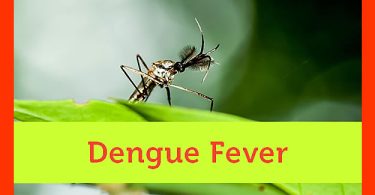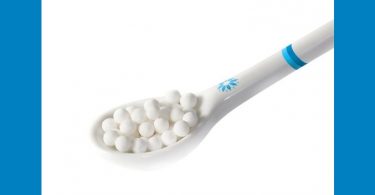Abstract: Extremely important conditions – suppression and drug disease – are described through characteristics: suppressive factor, latent period, symptoms conversion, illogic and oddity. The concept of latent psora elements (dyscrasia, diathesis, cachexia, idiosyncrasia, suppression) helped to analyze two aspects of drug disease and suppression – toxic (traumatic) and metastatic. Rubrics are suggested to repertorize those conditions.
Keywords: suppression, drug disease, suppressive factor, symptoms conversion, latent period
Suppression is a conversion of disease symptoms under the influence of various factors (medical procedures, medicaments), with consequent manifestation of new morbid symptoms. Drug disease is a suppression of symptoms by means of systemic medications (e.g., antibiotics, hormones, painkillers, antidepressants and other psychoactive substances).
The severe importance of drug disease and suppression was stressed long ago by Hahnemann (Organon, § 74-75): “Among chronic diseases we must still, alas!, reckon those so commonly met with, artificially produced in allopathic treatment by the prolonged use of violent heroic medicines in large and increasing doses… whereby the vital energy is sometimes weakened to an unmerciful extent, sometimes, if it do not succumb, gradually abnormally deranged…
These inroads on human health effected by the allopathic non-healing art (more particularly in recent times) are of all chronic diseases the most deplorable, the most incurable; and I regret to add that it is apparently impossible to discover or to hit upon any remedies for their cure when they have reached any considerable height.”
Suppression and drug disease exhibit not merely a change, but a conversion, transformation, metamorphosis of symptoms – primary disease events disappear (or subside to a major extent), but new manifestations emerge (or gradually come into life).
Those new post-suppression phenomena, if compared to the primary ones, are with more prominent functional disorders, more disseminated, more severe (discomfort is more intense and prolonged, general state is more disturbed), more destructive (structural changes mutate from less destructive to more destructive miasm).
Analyzing the whole process of suppression, one can see two aspects of it. Firstly, all anatomic structures (and functional units) contacting the suppressor agent are injured (functional resources deplete and degrade, structures from cell to tissue level derange) – this is “toxic” aspect of suppression.
Secondly, the primary disease locus (maximal concentration of morbid manifestations), having seemingly disappeared, actually moves (or travels) to the other location in the body (or this locus enlarges involving adjacent anatomic or functional structures) – this process resembles metastatic spread of malignancies (distant or invasive of nearby organs, tissues, vessels), so we can call it “metastatic” aspect of suppression.
Generally, suppression has several characteristics which will be explained further on: nature of suppressive agent, latent period between initial and post-suppression phenomena, symptoms conversion, illogic and oddity of all manifestations.
It’s quite convenient to explain these characteristics and nature of suppression via latent psora elements – Dyscrasia, Idiosyncrasia, Diathesis, Cachexia and Suppression – initially presented by J.H. Allen (https://hpathy.com/homeopathy-papers/latent-psora-a-practical-approach/). The whole element of suppression can present a vitality feature of being able to migrate from one stable state (with certain parameters of Dyscrasia, Idiosyncrasia, Diathesis and Cachexia) to another stable state (with other parameters) via certain way (or succession of stages, gradually and rapidly).
So, description of suppression should include parameters of initial and final states (discomfort tendencies, depletion, sensitivity and susceptibility) and manner of symptoms conversion from the initial to the final state. Thus, describing suppression, we need to answer following questions:
WHEN the suppression results are seen? It concerns latent period between initial and post-suppression phenomena.
WHERE DO the symptoms migrate? It covers localization and spread of the symptoms before and after suppression.
IN WHAT MANNER the symptoms migrate (convert, transfer)? It describes the certain way of symptoms conversion (transfer).
WHICH RESULTS? It depicts the state manifesting after the suppression.
Latent period is a time span between disappearance (or substantial alleviation) of initial symptoms and manifestation of post-suppression phenomena. Logic of this period is evident: vital force fights against suppression, trying to slow it down, minimizing injury and metastatic events, therefore this period can last quite long (sometimes even decades).
This period duration is a function of basic health level, genetic and miasmatic burden, lifestyle, individual environmental influences and other factors, many of which are unknown and require further studies. The nature of latent period has its own illogic and oddity (as everything in suppression characteristics) – basically, it is discordance of stimulus and response in time: stimulus causes response after some latent period.
There could be a “classic” latent period that is a literal break or apparent disappearance of the disease, but actually a careful observer can see that nothing disappeared, but latent psora keeps growing inside through Idiosyncrasia or Cachexia increase.
Mostly, the latent period is full of various discomfort – constantly changing morbid conditions that are “relatively” mild, or gradual increase in severity towards the new disease. We can suppose that the latent period characteristics are connected with the nature of the suppressive agent.
For instance, excessive use of painkillers (blunting the pain sensations) alters sensitivity and susceptibility, and long use of hormones affects hormonally active organs and tissues (cervix, breasts) or endocrine organs (thyroid, pancreas).
The manner of symptoms conversion is an illogic and oddity itself: there is discordance between stimulus and response in location (stimulus acts in one place, but response is seen in another one), and also we see a disordered natural logic of the disease process.
Basically, natural logic of disease process looks like a succession of stages: premorbid (indisposition, mild discomfort, slight changes in general state, no functional disorders), intermediate state (discomfort from mild to moderate, no functional disorders), disease (discomfort from moderate to severe, functional disorders present). There are several variants of how the symptoms migrate (conversion manner), all of them present combinations of Cachexia and Idiosyncrasia mixtures.
Reduction (or vanishing) of a phase in the disease process. Classic example of this conversion manner is a situation when the disease appears “as if from nowhere”, without preliminary indisposition and intermediate state, with minimal initial manifestations: discomfort was nearly absent yesterday (or several days back), but now (or shortly) a fully developed picture of functional disorders results from intense discomfort with concomitants.
Accentuated or prolonged one phase in the disease process. This conversion manner is caused by severe susceptibility decline: after multiple attempts to push fever down with antipyretics the body temperature normalizes, but the general state goes to asthenic with debility, poor concentration and dullness, indolence, accompanied by wandering and transitory pains, digestive problems, rheumatic complaints.
Functional disorders could be mild, but prescription is very difficult because of the elusive nature of major complaints. Accelerated whole disease process. Such problematic conversion manner is often referred to when “the body was literally burnt by fulminant disease”, “we failed to cope with such an intense and malignant state”.
Usually, the natural disease phases are present, but they are extremely short, terribly changeable, unpredictably intense and destructive – super-acute suppurative inflammation, fast metastases of malignancy, and so on.
Drastic changes in sensitivity (lower or higher). Increased sensitivity towards a certain factor dominates in clinical picture and causes many consequences: high sensitivity to noises (or odors), with consequent severe emotional reactions (anger, anguish) and intense pain (in stomach, headache, toothache, etc.).
Stably decreased or perverted smell and taste are also of this conversion manner.
Substantially increased susceptibility. This conversion manner is a nightmare of homeopath treating skin problems suppressed with local hormones (or systemic hormones, immune suppressors, cytostatic agents).
In such cases any dose of any potency causes overreaction, worsening present symptoms, emerging new symptom. These conditions are terribly difficult to treat, as quite long time is needed to normalize altered susceptibility.
Dramatically decreased susceptibility. Depleted susceptibility could be a more difficult problem than overreactions, especially in old people with a heap of various chronic conditions. Absent or nearly unnoticeable reaction to any dose of any potency, fast depletion of the remedy action.
With that, the potency (or dose) increase is contraindicated as low vitality could not digest the acting stimulus.
Severe weakness (full-blown asthenic state). Asthenization (or Cachexia, according to J.H. Allen) goes along with lower susceptibility quite often, but can also be a single dominating element in the conversion manner during suppression.
Weakness could be a central manifestation, cooperate with emotional indifference and apathy, low appetite, vegetative reactions, decreased elimination functions. Such condition is seen both in acute fever states and in chronic somatic diseases, when massive hormones, antipyretics, antibiotics, painkillers wash out pain and other mostly local symptoms, but make the patient powerless, inert, dull and lethargic.
The same is true for mental diseases under psychoactive drugs. Illogic and oddity, disturbed natural logic of the disease process are distinctive during suppression – it is easily portrayed by the term “discordance” at all levels, mostly between stimulus and response. Stimulus is mild, but response is too strong – this is discordance in intensity.
Stimulus is acting now, but response is seen in some time (latent period) – this is discordance in time. Stimulus operates in one place, but response appears in an exactly different location where it’s difficult to be expected – this is discordance in place.
Suddenness, abruptness, unpredictability of symptoms, manifestations, reactions – this is discordance in place, time and intensity together. These types of altered reactivity (susceptibility) are not unique for suppression process – they can be seen without suppression itself, especially due to severe miasmatic burden.
Suppression and drug disease quite frequently result in a phenomenon that was nicely described by Hahnemann under the name of “one-sided disease” (Organon, §176) – this is essentially selective decrease in susceptibility, when various characteristics (modalities, concomitants) of any symptom vanish or are masked under allopathic treatment, and only “one or two severe, violent symptoms” still present.
Initial symptoms and suppressive factor are very important characteristics of suppression process. We can make three groups according to nature of initial symptoms and suppressive factor. Of course, intensity and results of suppression are significantly different in those groups:
Suppression of external symptoms (eruptions, discharges normal or pathologic) with local means (or allopathic medicaments). Repertory rubrics that can be effectively used for this problem are: e.g., Coryza suppressed agg, Discharges suppressed, Mucous secretions suppressed, Eruptions suppressed, Perspiration suppressed.
Suppression of internal symptoms with systemic allopathic medicaments (painkillers, hormones, antibiotics, anti-inflammatory drugs, antidepressants, antihypertensives, etc.). This is a classic type of drug disease, requires more complex repertorial approach.
Usually for this type of suppression, a combination of several rubrics is needed. Toxic (or traumatic) aspect of drug disease is covered by combined rubrics Generalities; intoxication, after; medicaments, Generalities; intoxication, after; china abuse, from, without quinine cachexia and adding certain remedies from rubrics describing toxicity by selected substances (e.g., mercury, laxatives, digoxin). Metastatic aspect of drug disease is covered by rubric Generalities; metastasis.
Suppression of external or internal symptoms with surgical procedures. This picture can be covered by general rubrics that depict body reaction (discomfort trends, sensitivity, susceptibility, weakness) to surgical injury – Injuries operations from, Pain operations after, Reactions lack operations after, Weakness operations after.
There are more local rubrics outlining surgery effects in various organs and systems – to find them, one can search by some keyword (e.g., “operations”) in specific repertory part: Nausea operations on abdomen after. Some rubrics can be useful to address general effects of some special operations – e.g., Operations after calculi for, Operations after chest of, Fistulae operations of after.
Serious discussion took place several years back in the homeopathic community on a very interesting question: Is suppression possible by homeopathic remedies? Supporters of this concept (even now) give a simple example: homeopathic medicine was given, symptoms disappear, but some more severe complaints appeared in some time after the medicine.
But we have to understand clearly that a suppressive agent plays a tremendous role in the whole suppression process: we see different results after suppression with abdominal surgery and general anesthesia, with systemic allopathic medications, or with local application of allopathic ointments.
A homeopathic remedy is nothing but an individually selected informational signal to the body regulation system, whereas allopathic medication is a highly toxic substance in macro doses selected just by diagnosis (theoretic idea).
Thus, the correct answer is “no”, howsoever we could explain that after homeopathic medicine the patient remains vulnerable to external influences and to intrinsic harmful work by latent psora. Many items, facts and tendencies in suppression theory and process remain unclear, or go mostly to the hypothesis realm.
There are some “trigger” areas (zones, spheres, clinical complexes) where suppression results in especially tragic and significant reactions – by now, these are discharges, skin and rectum, and consequences are mostly due to elimination functional blockage.
Those “triggers” could be much more, depending on individual features, on miasmatic burden, etc. No answers we get by now to some vital questions: What factors influence duration of latent period of suppression? How can we assess direction of symptoms conversion in suppression? How suppression characteristics (latent period, direction) depend on properties of suppressive agent? How can we help depleted vital force to overcome suppression? All these questions will be answered through persistent scientific, analytic and clinical work for homeopathy development.






